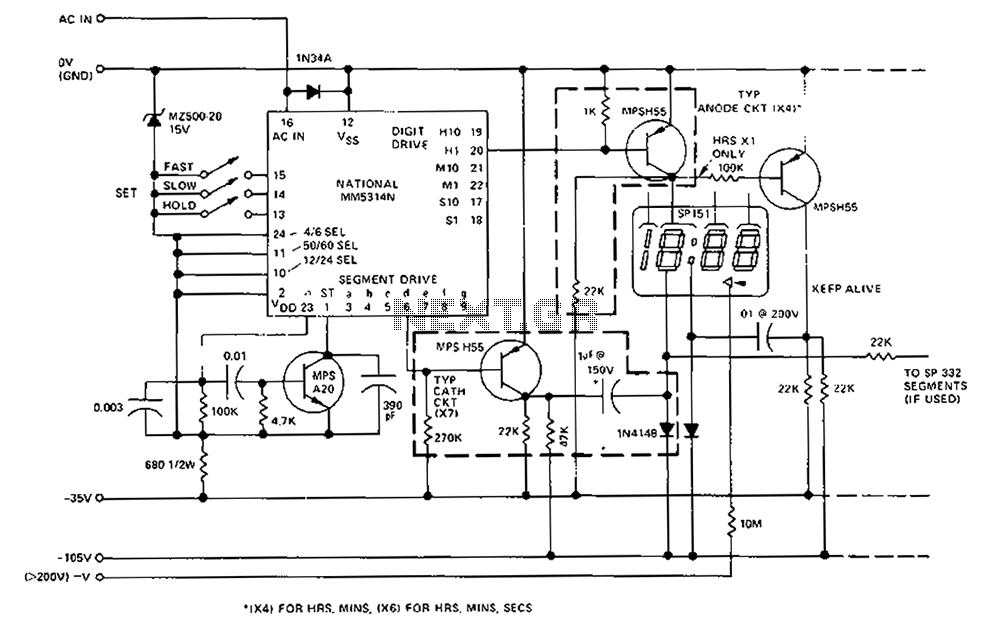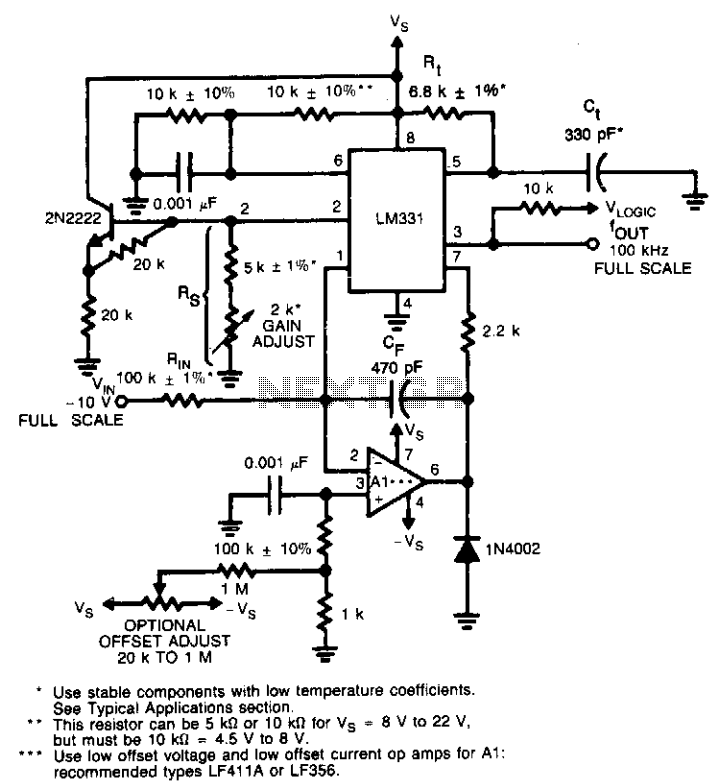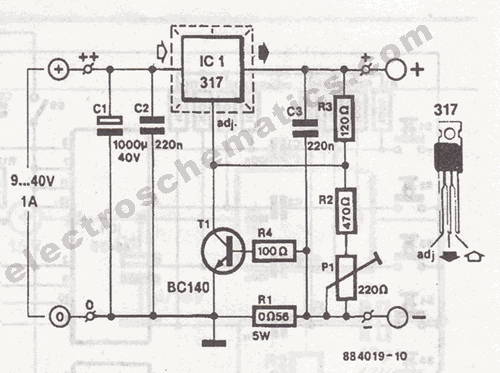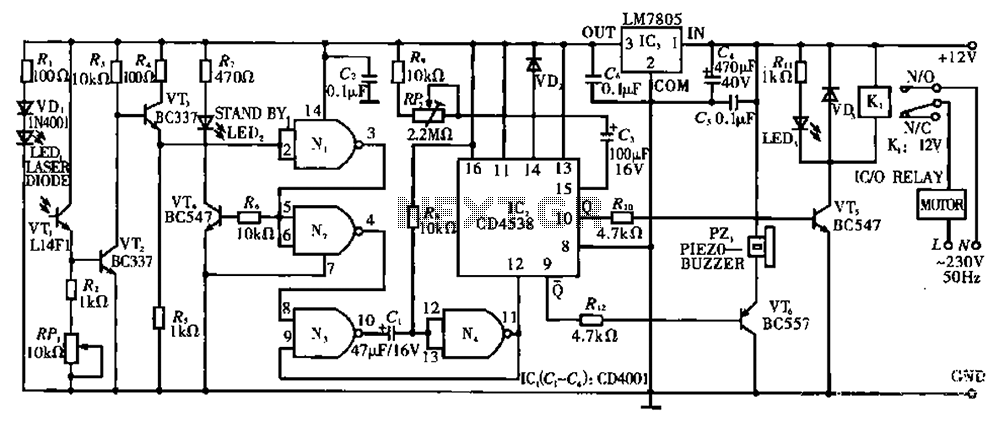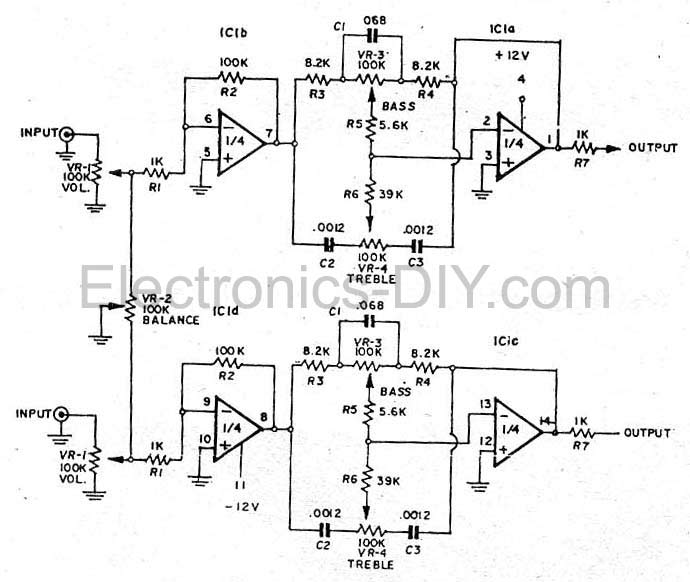
Cutoff frequency 48dB-octSCF low-pass filter circuit
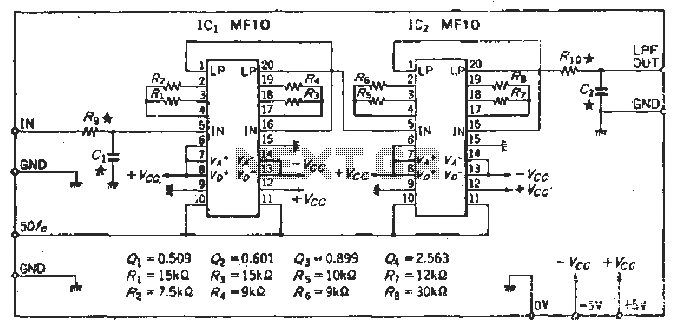
To create a Butterworth low-pass filter with a 12 dB/octave roll-off, four second-order (12 dB/oct) filter blocks are connected in series. This configuration is intended to achieve flat response characteristics across the frequency spectrum. The values for each stage of the filter will be distributed accordingly. The circuit's parameters are derived from a sequence initiated at a small block. However, a disadvantage of this arrangement is that the output clock signal may become distorted, leading to a deterioration in the signal-to-noise ratio (S/N). Additionally, if the input signal frequency approaches the clock frequency, noise may be introduced at the output. To mitigate this issue, a low-pass filter must be integrated into the input circuit. This circuit employs simple passive filters to enhance the S/N ratio. If the input signal exhibits a wide frequency spectrum, an active filter with positive regulation should be added to determine the cutoff frequency. The clock frequency can be set to 12, with a connection to +5V for a required clock frequency of 50 Hz, and when connected to 0V, the frequency should be 100 Hz. The upper limit for the clock frequency is set at 1 MHz, allowing for the formation of a low-pass filter with a cutoff frequency of 20 kHz.
The described circuit utilizes a Butterworth low-pass filter design, known for its maximally flat frequency response in the passband. The series connection of four second-order filters results in a total of 48 dB/octave attenuation beyond the cutoff frequency, which is beneficial for applications requiring sharp frequency roll-off.
The design considerations include selecting appropriate resistor and capacitor values to achieve the desired cutoff frequency. The cutoff frequency (fc) can be calculated using the formula:
fc = 1 / (2πRC)
where R is the resistance and C is the capacitance of each filter stage. The distribution of values across the four stages allows for fine-tuning of the filter response and ensures that the transition between passband and stopband is smooth.
To address potential issues with signal integrity, the output stage must be designed to minimize distortion. The integration of a low-pass filter at the input stage serves to suppress high-frequency noise, enhancing the overall S/N ratio. If the input signal contains a wide frequency spectrum, an active filter configuration may be necessary to maintain the integrity of the desired signal while effectively attenuating unwanted frequencies.
Power supply considerations are also crucial, with the circuit requiring a stable +5V supply for optimal performance. The clock frequency settings indicate a need for flexibility in the design to accommodate varying operational conditions, ensuring that the circuit can adapt to different input signal characteristics without compromising performance.
In conclusion, the design of this Butterworth low-pass filter circuit is aimed at achieving a high-quality signal output while addressing common challenges associated with clock signal distortion and noise interference. Proper selection of components and careful configuration of the filter stages will result in an effective solution for applications requiring precise frequency filtering.In order to obtain wax dB / oct low pass filter of Butterworth times, the four 12dB / oct (2-order filter) block were four series, in order to obtain the flat characteristics of tanks, the opening value at all levels will be distribution, the value of the circuit from the mouth small block start sequence, they worked out the parameters of heart SCF disadvantage is that the output clock signal is multiplied, so SlN deteriorate, additional input signal frequency will close off the clock frequency Diego, noise, the output, the input circuit must be added to a low-pass filter. This circuit uses a simple passive filters to improve the S / N, if the input signal has a very wide frequency spectrum shall be added to the positive regulation of active filter.
Determined cutoff frequency. The clock frequency can lead to 12 to select, lead wire connected to + sv 12, the required clock frequency 50j inches, when connected ov, need 100f. The upper limit of the clock frequency is iMHz, so it is easy to form 20 kHz h. 1, the low-pass filter.
The described circuit utilizes a Butterworth low-pass filter design, known for its maximally flat frequency response in the passband. The series connection of four second-order filters results in a total of 48 dB/octave attenuation beyond the cutoff frequency, which is beneficial for applications requiring sharp frequency roll-off.
The design considerations include selecting appropriate resistor and capacitor values to achieve the desired cutoff frequency. The cutoff frequency (fc) can be calculated using the formula:
fc = 1 / (2πRC)
where R is the resistance and C is the capacitance of each filter stage. The distribution of values across the four stages allows for fine-tuning of the filter response and ensures that the transition between passband and stopband is smooth.
To address potential issues with signal integrity, the output stage must be designed to minimize distortion. The integration of a low-pass filter at the input stage serves to suppress high-frequency noise, enhancing the overall S/N ratio. If the input signal contains a wide frequency spectrum, an active filter configuration may be necessary to maintain the integrity of the desired signal while effectively attenuating unwanted frequencies.
Power supply considerations are also crucial, with the circuit requiring a stable +5V supply for optimal performance. The clock frequency settings indicate a need for flexibility in the design to accommodate varying operational conditions, ensuring that the circuit can adapt to different input signal characteristics without compromising performance.
In conclusion, the design of this Butterworth low-pass filter circuit is aimed at achieving a high-quality signal output while addressing common challenges associated with clock signal distortion and noise interference. Proper selection of components and careful configuration of the filter stages will result in an effective solution for applications requiring precise frequency filtering.In order to obtain wax dB / oct low pass filter of Butterworth times, the four 12dB / oct (2-order filter) block were four series, in order to obtain the flat characteristics of tanks, the opening value at all levels will be distribution, the value of the circuit from the mouth small block start sequence, they worked out the parameters of heart SCF disadvantage is that the output clock signal is multiplied, so SlN deteriorate, additional input signal frequency will close off the clock frequency Diego, noise, the output, the input circuit must be added to a low-pass filter. This circuit uses a simple passive filters to improve the S / N, if the input signal has a very wide frequency spectrum shall be added to the positive regulation of active filter.
Determined cutoff frequency. The clock frequency can lead to 12 to select, lead wire connected to + sv 12, the required clock frequency 50j inches, when connected ov, need 100f. The upper limit of the clock frequency is iMHz, so it is easy to form 20 kHz h. 1, the low-pass filter.
